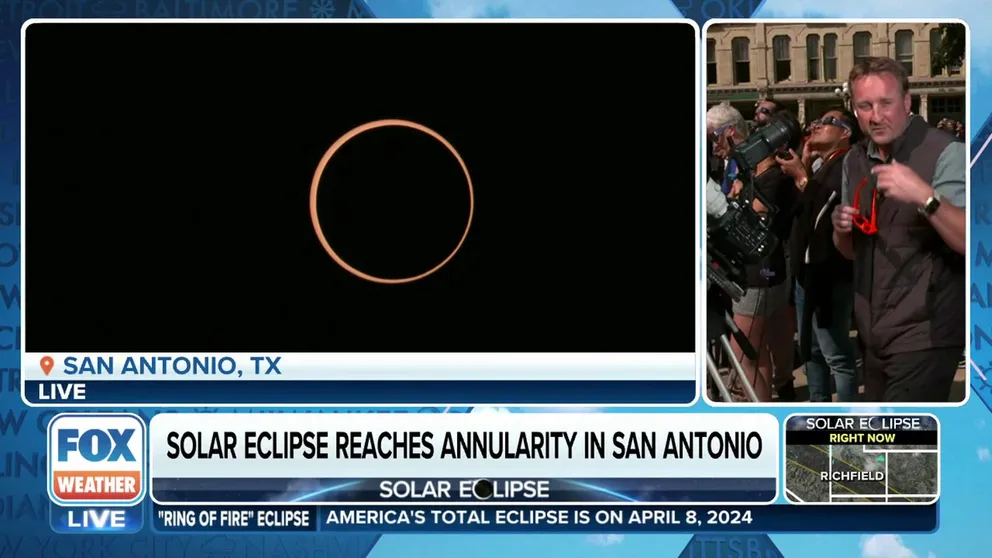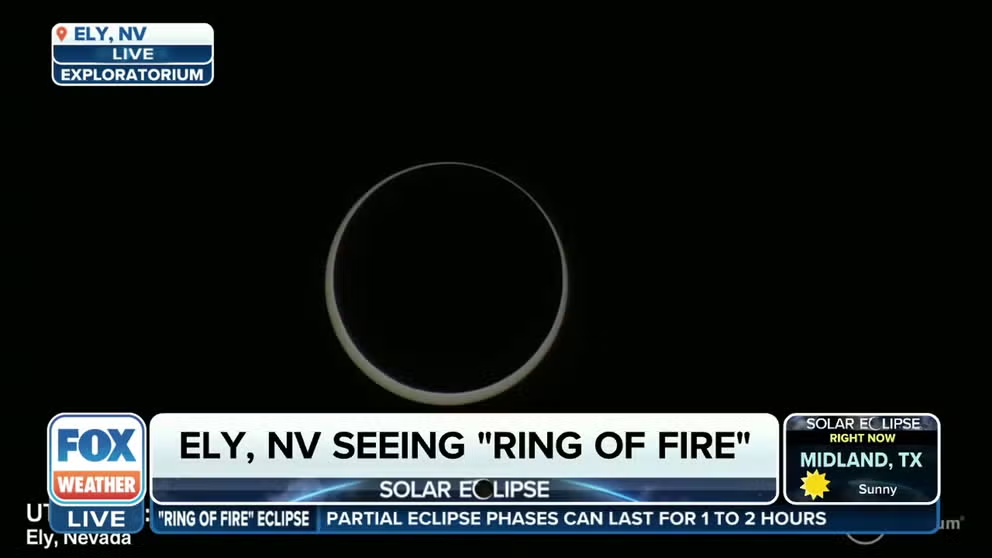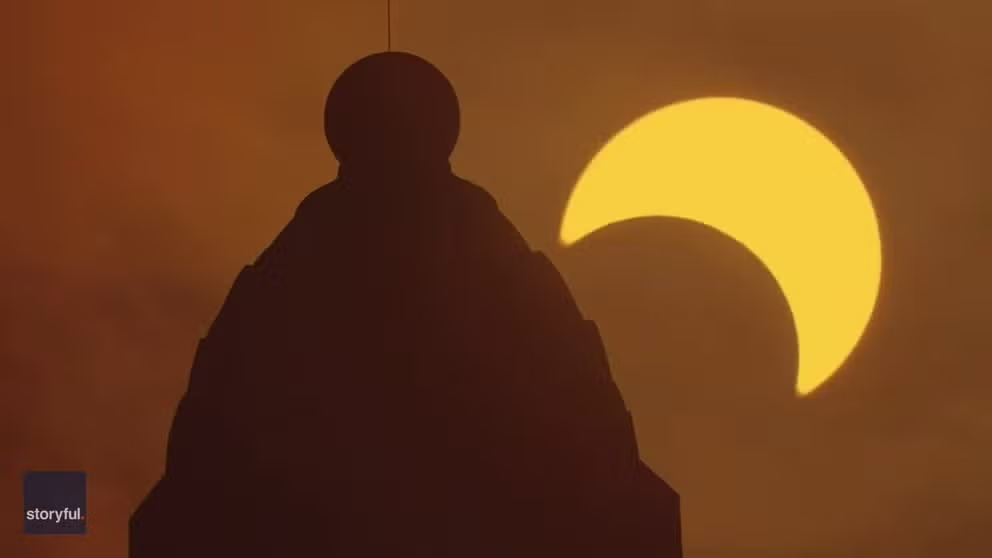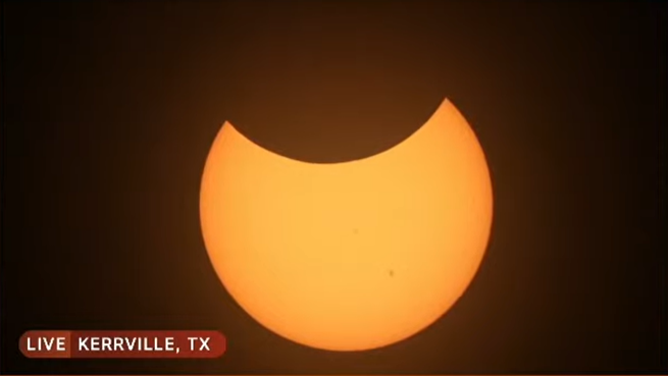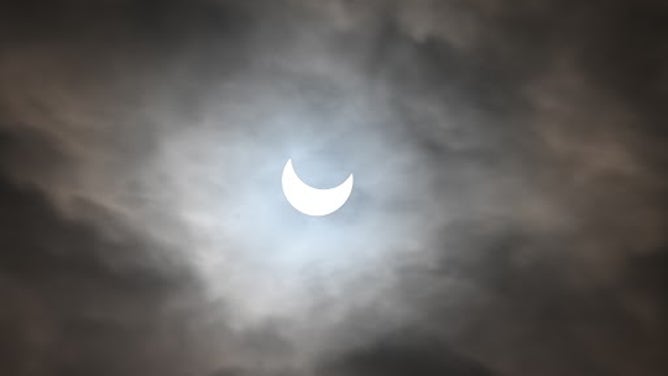Solar eclipse: ‘Ring of fire’ dazzles skygazers across Texas, Southwest
Thousands packed places along the 125-mile-wide path of maximum eclipse that stretched from the Pacific Northwest to the Gulf Coast of Texas.
Skygazers in San Antonio cheer during annular solar eclipse
People in San Antonio, Texas, saw annularity just before 12 p.m. CT on Oct. 14, 2023. FOX Weather’s Robert Ray reports.
ALBUQUERQUE, N.M. – Over a billion people from North to South America were treated to a celestial show Saturday as the Moon bypassed in front of the Sun creating what is known as an annular solar eclipse.
The spectacular "ring of fire" created gasps and cheers as the annular solar eclipse darkened skies and left just a sliver of the sun visible from Oregon to Texas.
Watch: "Ring of Fire" passes over Ely, Nevada
FOX Weather coverage of the annular solar eclipse passing over Nevada.
Residents and visitors from the Pacific Northwest to the Lone Star State were in the prime real estate as a 125-mile wide path of annularity passed overhead.
The path included such landmarks as The Alamo in San Antonio, the annual Albuquerque International Balloon Fiesta in New Mexico, Utah’s Canyonlands National Park and the Desert Southwest’s Four Corners Monument.
Skies were exceptionally clear in Wyoming where meteorologists at the National Weather Service in Riverton spotted the event from the office.
Watch: Timelapse video shows San Francisco sky turn orange as annular solar eclipse dazzles skygazers
Timelapse footage recorded over San Francisco’s Hoover Tower shows stunning visuals of the annular solar eclipse that occurred on October 14.
Timelapse video recorded in San Francisco showed the progression of the eclipse as it passed overhead and turned the sky orange. And in San Diego, skies were also clear for the sun to appear in the form of a crescent during the morning hours.
Some communities reached 90% obstruction as the Moon passed in front of the sun but most of the U.S. experienced 30-80% blockage.
The eclipse was also visible from satellites 22,500 miles away from Earth. The GOES-East satellite captured the West appearing to lose sunlight before noon on Saturday.
The maximum dimness lasted less than an hour before full sunlight started its return. During the minimal sunlight, weather observation sites reported a decrease in temperatures.
A weather observation site in central Oklahoma reported a drop in temperature of more than 3 degrees and other locations that were closer to the path of annularity likely saw a steeper jump.
A phenomenon that was observed in California, Texas and many other communities were mini-crescents being projected on pavements and other surfaces. Hurricane Tracker Mark Sudduth caught the imagery on the ground in Texas.
The imagery occurred when the eclipse was at its peak over the region as the light from the sun shined through shrubs and other vegetation.
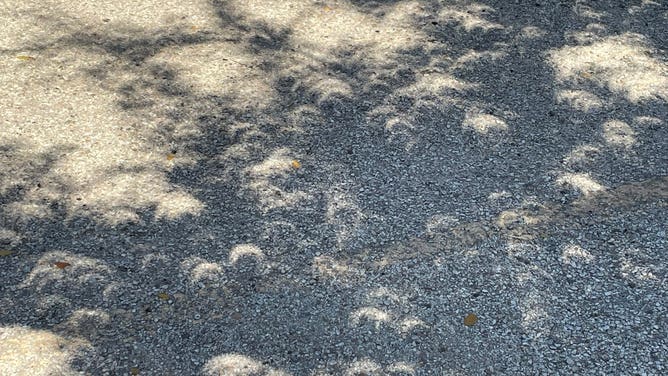
Shapes of crescents form along the ground due to the eclipse in Texas
(@hurricanetrack / FOX Weather)
Even better eclipse show coming to America in 2024
If you missed the annular eclipse this year, you’ll get another chance next spring as a total solar eclipse treks from Texas across the Mississippi and Ohio Valleys and into New England.
Unlike Saturday’s eclipse that led to 90% blockage of the sun, the total eclipse on April 8, 2024 will cover the entire star.
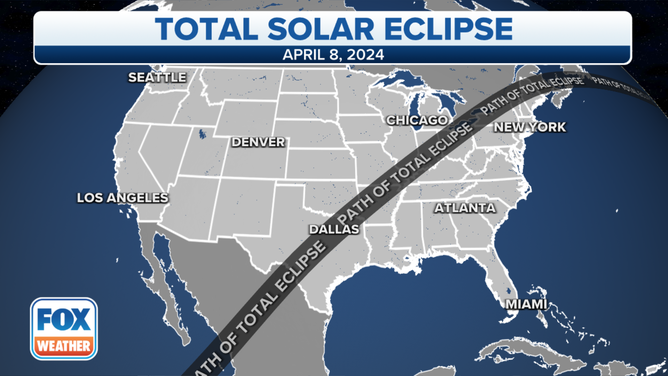
Path of totality during the Great North American Solar Eclipse on April 8, 2024.
(FOX Weather / FOX Weather)
The U.S. has had a fortuitous run of eclipses over the past seven years, with another total solar eclipse that crossed the West in 2017. But next April’s eclipse will be the last chance to witness a total solar eclipse in the U.S. until August, 2045.
